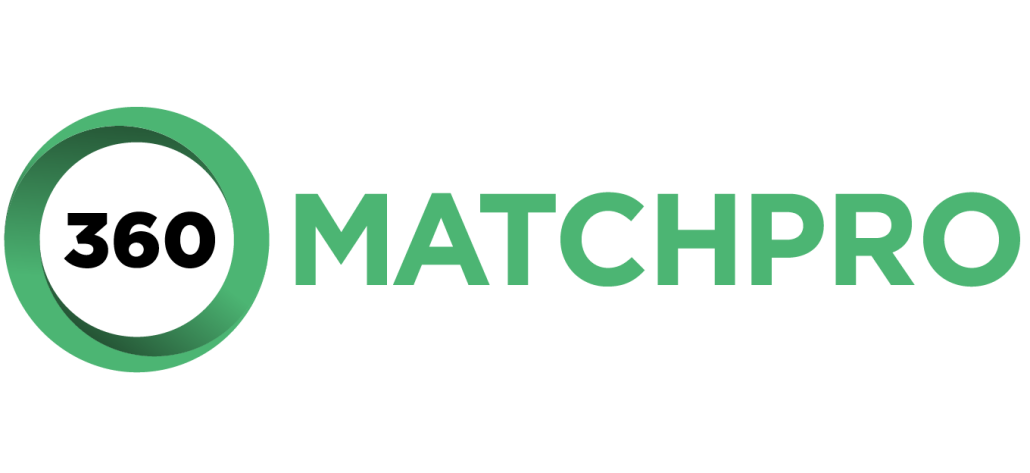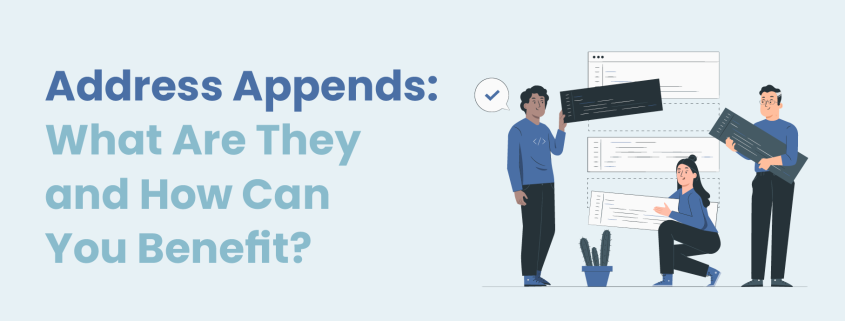Address Appends: What Are They and How Can You Benefit?
Nonprofits collect a variety of data about their donors, from their preferred communication channels to their average gift amount to their demographic information. At a minimum, almost all nonprofits gather supporters’ contact information, such as their email addresses and phone numbers.
But are you collecting supporters’ mailing addresses? Even if your nonprofit doesn’t have a robust direct mailing strategy, addresses can be instrumental in strengthening your relationships with supporters by giving you more context about where supporters are located and allowing you to contact them via mail.
However, outright asking for long-time supporters’ home addresses might feel invasive. Fortunately, you don’t have to with an address append.
In this guide, we’ll explore address appending essentials, what appends are, how they benefit nonprofits, and how the appending process works. First, let’s make it clear exactly what an address append is so you can decide if getting one is right for your nonprofit.
What Are Address Appends?
Data appends are corrections and additions to your data that fill in missing information and update incorrect and outdated information. This means that an address append is a correction and completion of data related to your supporters’ mailing addresses.
Providers conducting data appends find data by comparing the information in your donor database to information in external databases. For an address append, your supporters likely have already given their address information to a variety of other vendors for shipping and payment information. Some of these vendors have clauses in their user agreements that allow them to sell data to third parties, like data appending services.
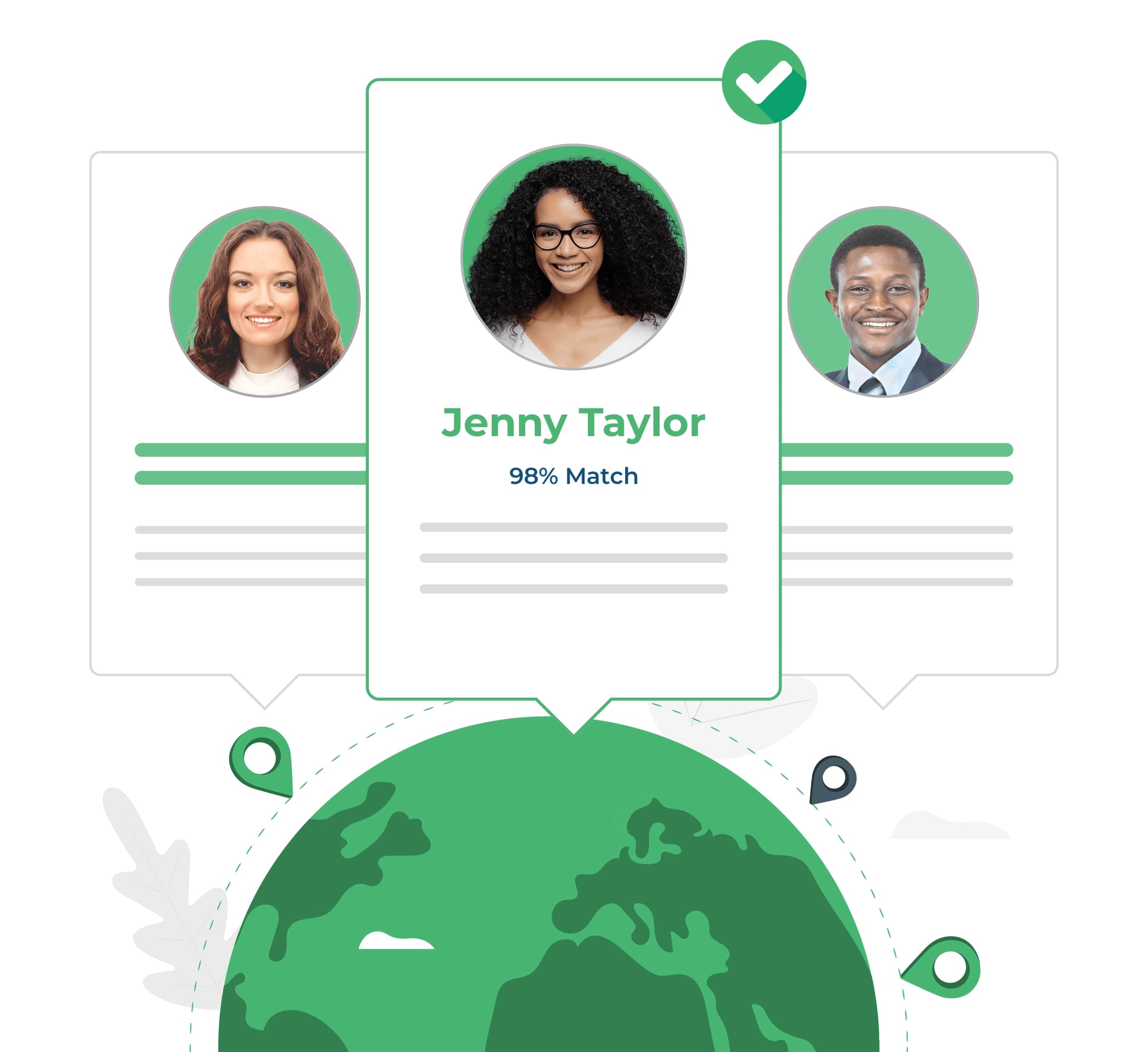
Nonprofits can purchase appends for various types of data in addition to addresses, such as:
- Phone numbers, which allow nonprofits to get in touch with supporters via phone for phone-a-thons and texting drives.
- Email addresses are the supporter communication method of choice for most nonprofits, and email address appends ensure nonprofits never lose contact with their audience.
- Employer information provides insight into whether donors are eligible for various corporate giving programs, like matching gifts, volunteer grants, and volunteer time off.
- Demographic data lets nonprofits know who their average supporter is, informing their communication strategy and letting them segment their audience.
- Date of birth appends allow nonprofits to know their supporters’ ages, improving segmentation and allowing advocacy groups to target individuals who can vote. Plus, nonprofits can use date of birth appends to send supporters birthday greetings to help build a long-term relationship.

If your nonprofit is considering purchasing an address append, consider looking for a service provider that offers other appending services. This way, if you are satisfied with your address append, you can easily return to the same provider for additional appending needs rather than starting the research process over again.
Address Append Benefits
Purchasing any append is an investment. Determine if an address append will be worthwhile for your nonprofit by considering these benefits:
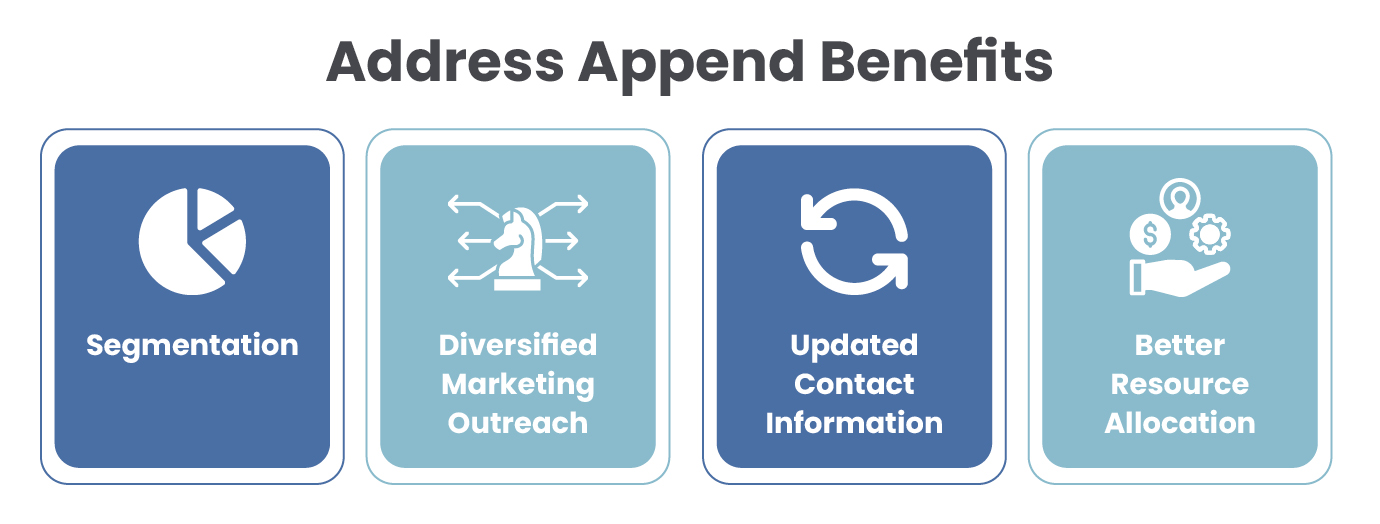
Segmentation
Knowing where your supporters live allows you to make certain inferences about them that can improve your marketing efforts.
For example, you might group supporters based on how close they live to your nonprofit. Those who live within a reasonable driving distance of an hour or less might be considered “local supporters,” those who live in your state would be “state residents,” your country “country-based supporters,” and those outside of your home country “global supporters.”
This information is highly relevant to certain types of activities and campaigns. For example, an advocacy campaign focused on upcoming legislation for your city would hyper-focus on local supporters, or you might send local supporters invitations to an in-person event.
In contrast, if you have a wide range of supporters scattered across the globe, you might focus on online events that everyone can participate in, regardless of location.
Diversified marketing outreach
Many nonprofits focus primarily on online outreach, but direct mail still has its place in many organizations’ fundraising strategies for good reason. For instance, for every $1.27 spent on direct mail fundraising, nonprofits earn an average of $4.09.
With address appends, you can stay in touch with supporters via direct mail even if they move or change mailing addresses.
Updated contact information
Regular data appends keep your data accurate and correct. For large nonprofits, purchasing routine appends may even be part of your data hygiene process. If you worry that a significant amount of your nonprofit’s donor data is wrong or needs an update, an append is an easy way to verify your information and quickly correct old information.
Better resource allocation
Direct mail outreach costs money, and returned mail represents a wasted cost. Additionally, hunting down addresses for supporters whose information you’re missing can be time-intensive. With an address append, your provider can handle these processes for you. Plus, most append services use multiple databases, meaning they will likely have better accuracy than your nonprofit manually hunting down individual addresses.
Along with improving your mailing strategy, address appends provide information other teams at your nonprofit might be able to use. For example, your major gift officers might appreciate having prospective major donors’ addresses as part of their research. After all, real estate holdings are a reliable wealth indicator, and an address append turning up multiple houses or high-value properties can be useful.
Organizations That Use Address Appends
Nonprofits
Nonprofit trends change over time, but securing a local donor base helps nonprofits retain reliable support, even in times of uncertainty and economic turbulence.
With an address append, you can determine which of your supporters are in your local area. From there, you can use this information to better connect with those individuals and use them as jumping-off points to spread your network and establish your nonprofit in your community. For example, you might host an event and encourage all nearby supporters to invite their friends and family to come as well.
Additionally, direct mail is a staple of many nonprofits’ fundraising strategies. Use direct mail to send:
- Event invitations
- Thank-you messages
- Fundraising appeals
- Gifts
- Prizes
Direct mail makes your nonprofit stand out, and if supporters notice your organization’s return address is nearby, they might get inspired to engage with your nonprofit further.
Educational Institutions
Schools are community-based organizations, but after your university’s students graduate and move away, it’s easy to lose that community. Stay in touch with these students no matter where they go after graduation with an address append.
Knowing your alumni’s addresses allows your school to send fundraising appeals, reach out with alumni engagement opportunities, and keep track of where and what your former students are doing. Data about where your alumni live and what sectors they work in can be helpful not just for reaching out to those former students but also for promoting your school to prospective students.
For example, some schools include an interview with a trusted former student as part of their admissions process. With address appends, you can reach out to alumni far and wide to accommodate all of your applicants and provide them with someone who can answer questions about what it’s like to attend your university.
Associations
Having multiple points of contact with your association’s members increases your ability to stay in touch with them. This allows you to alert them about upcoming opportunities, send renewal reminders, invite them to local events, and encourage them to stay engaged with your association.
Advocacy Groups
If you’ve ever received a political leaflet or pamphlet in the mail from an organization you can’t recall giving your information to, it’s likely from an advocacy group in your area that purchased an address append.
Address and phone number appends are popular tools for grassroots political and advocacy groups. With this information, these organizations can easily get in touch with local voters to inform them about legislation and candidates in upcoming elections. Plus, advocacy groups often have location-specific information to share, such as polling locations and rally dates.
Address Appending Process
All appending processes generally follow the same steps, regardless of your specific provider or the type of appending you’re seeking. In almost all cases, your nonprofit will not be involved in the appending itself, but it can still be useful to understand what happens behind the scenes:
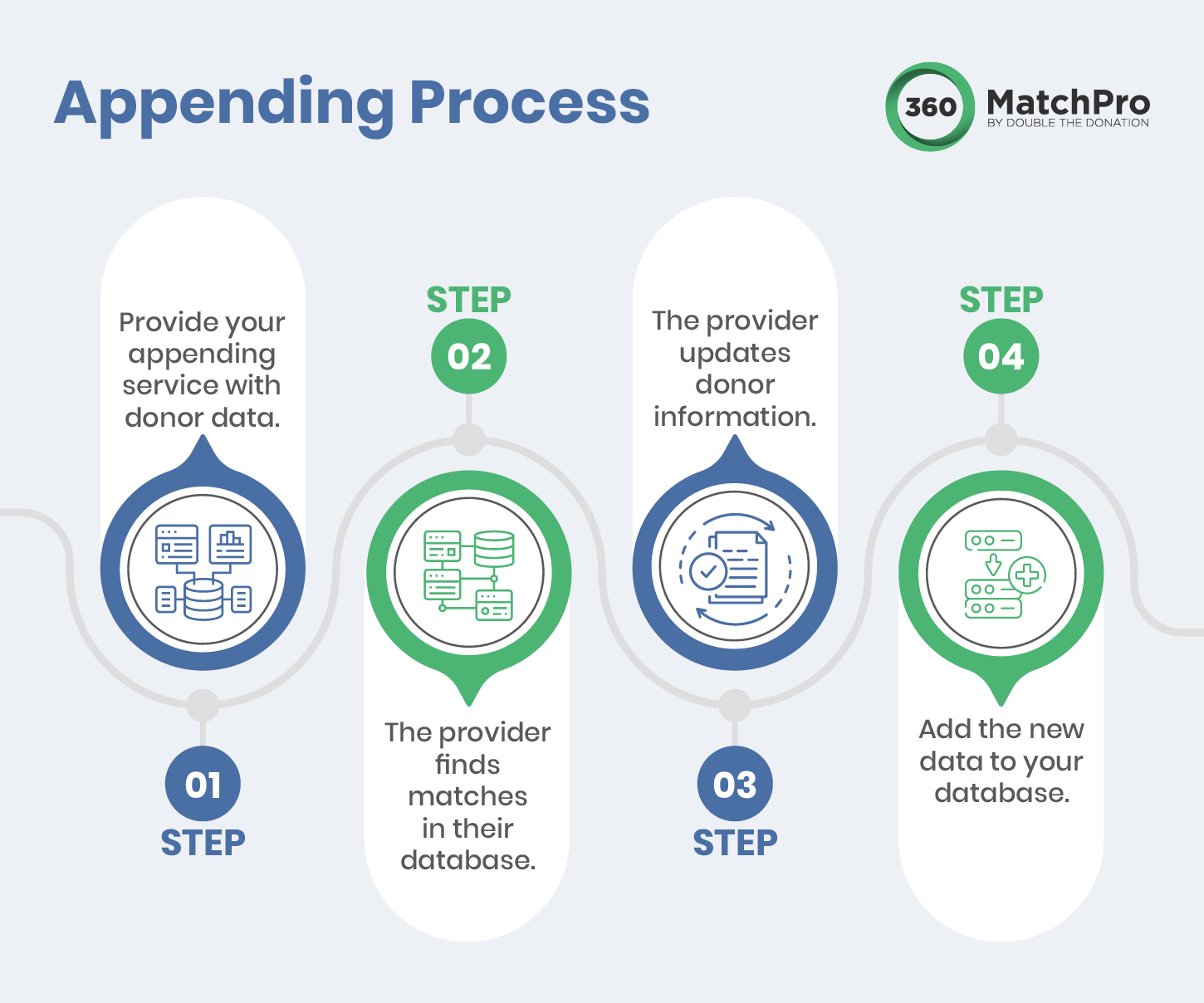
- Your nonprofit provides donor records to be appended. Share the information you would like to update. As the appending process involves sharing identifying information, be sure you work with a trusted appending service that takes proper data security measures.
- The append provider finds matches in their database. Append services correct outdated information and find missing data by comparing your current data to the information in their databases. For example, you might provide an appending service with a donor’s name and email address. With that information, they can identify more complete records of individuals with that same email address and name in other databases.
- The provider updates your information. When the append service provider finds information they think is correct, they will add it to the appropriate profile. While append services strive to provide accurate information, mistakes can occur due to individuals having the same name or similar-sounding addresses. To account for these errors, many append services will provide confidence scores, which indicate how likely the information is to be correct.
- You receive the appended data. After all donor records have been appended, the appending service will turn over their findings to your nonprofit. Ensure the data is formatted so you can automatically sync it to your nonprofit’s donor database and avoid entering it manually.
If you find an appending service you like, make a note of it for later reference. If you need other data appended or require another address append in the future for new donors and donors who have moved, you can return to your trusted provider.
More Appending Resources
Address appends help your nonprofit stay connected with donors, whether they’re new to your organization or old donors who have moved away. Keep your database up-to-date and useful by looking into appending service providers and choosing a trusted partner to correct your data.
Address appends are just one type of append. Explore these resources to learn more about different types of appends for nonprofits:
- Alumni Data Appends: Connect With Your University’s Donors. Universities need to stay up to date on their alumni to build a community and earn donations. Discover how your school can stay connected to students post-graduation.
- Email Appends: How to Unlock Focused Nonprofit Outreach. Email is one of the most popular communication channels for nonprofit outreach. Learn how to update your donor database with an email append.
- Your Ultimate Guide to Employer Appends for Nonprofits. Employer append information can point your nonprofit toward corporate giving opportunities. Explore employer appends and how to purchase one.
